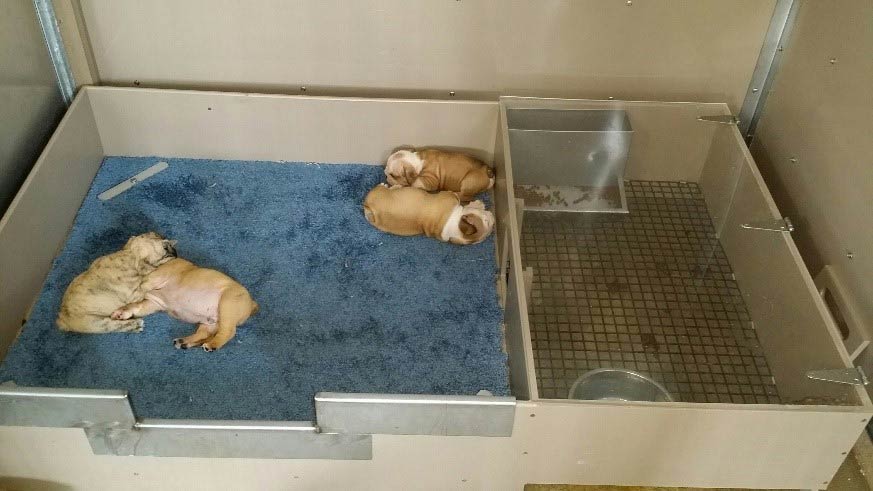One of my first memories about breeding dogs is that of my father building a whelping box for our Afghan Hound, Twiggy.
I can remember Dad getting two boards 8 feet long by 1 inch thick by 12 inches wide, and 8 “L” brackets. He cut the boards in half and fashioned them together with the brackets. We added newspaper to the bottom and then tore more newspapers into long strips. Suddenly we had a whelping box! As simple as this sounds, you still needed power tools (circular saw and a drill) or some good elbow grease to run the handsaw and screwdriver. I spent hours each day in that whelping box playing with puppies, watching them grow, and cleaning up the mess.
That type of box still works today, and so does a wading pool or the bottom half of a dog crate (without any depressions along the inside on the floor), depending on the breed, space, location of the whelping experience, and storage options.
But there also have been many innovations in whelping boxes. Today we see boxes that contain litter boxes to teach early latrine skills and separate play areas for puppy enrichment. There are many styles of commercially made boxes that you can purchase from several companies, like this easy to assemble and store MagnaBox.
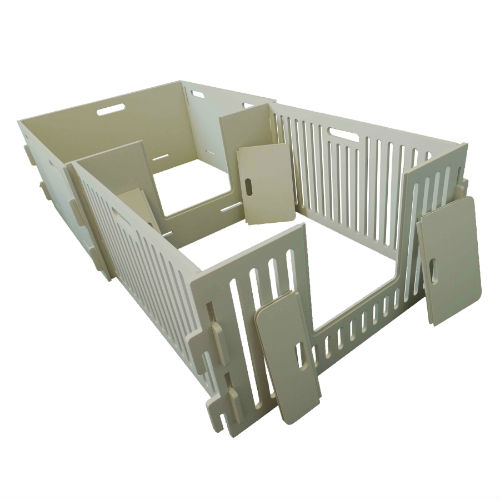
Here is a look at other new designs that help keep our puppies warm and safe.
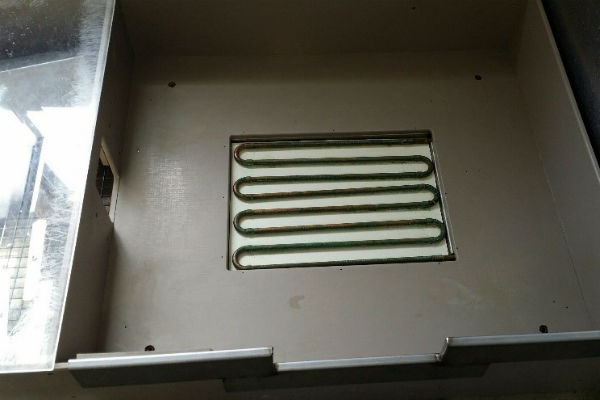
This box has a radiant heat floor. It uses thermometer-controlled water to circulate in the center of the floor. You set the temperature to just the right setting for your breed and circumstances. Having the heat in the center of the box encourages puppies to stay in the center, and away from the edges where there is a greater risk for mother dog to lie down on them.

In this same box, note the small door and plexiglass lid to the left of the coils. This is an entrance to the puppies' litter box and to their special food and water that Mom can’t access! This box is made of marine-grade plastic, which can easily be cleaned and disinfected.
Notice the aluminum trim to prevent chewed corners and the flat aluminum tack bars holding the carpet into place. This is a great way to secure your bedding, so Mom doesn’t roll the puppies in it. Please be careful if you use carpeting in your boxes, as most will string, unravel, or flake, and this poses significant health and safety threats to your animals. Carpet is also very difficult, if not impossible, to clean and disinfect for another use.
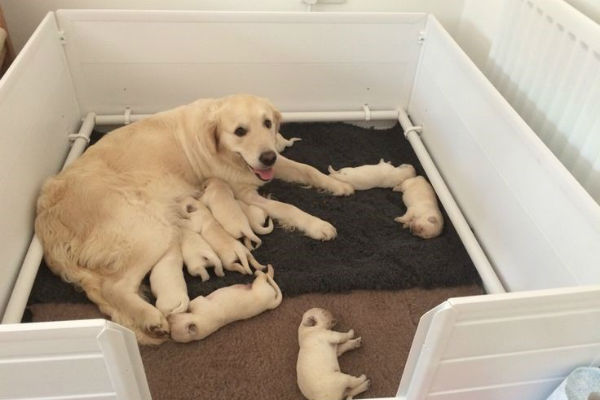
I highly recommend that all whelping boxes have pig rails or roll bars on all four sides to keep puppies protected from being laid on by Mom.

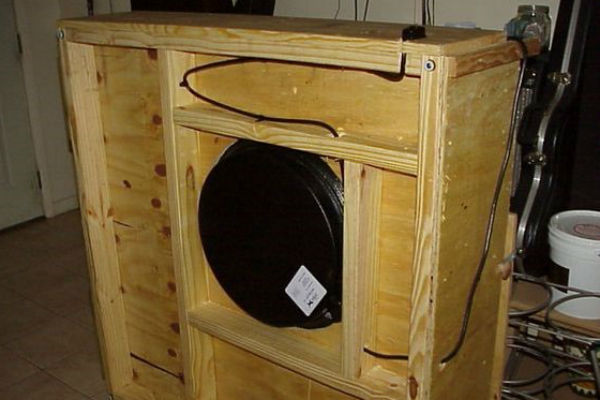
This warming nest can be purchased through Drs. Foster and Smith. When you use a center-floor heat source, be sure to build your box with a very strong center support, so you don’t have any sagging or pinching happening.

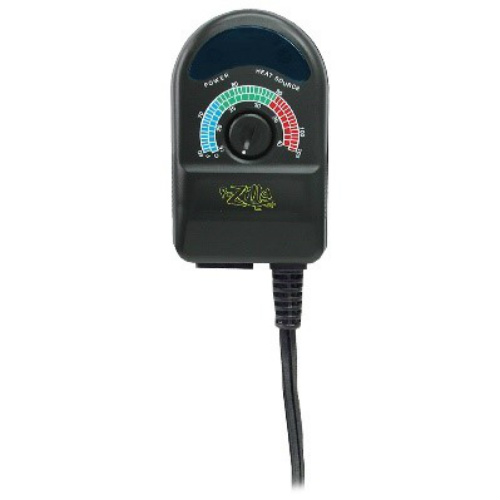
These are examples of what is commonly called a “hog” heat mat and a “reptile” thermostat. These types of mats are much more durable and safe for kennel use. They have a solid plastic surface with a wire protection around the cord. This will help prevent the puppies from being rolled up in a flexible human-type of heating pad or from chewing the cord. When this heat mat or the warming nest is used with a reptile thermostat, it will help keep your temperature perfect, even when the weather changes and you are not around!
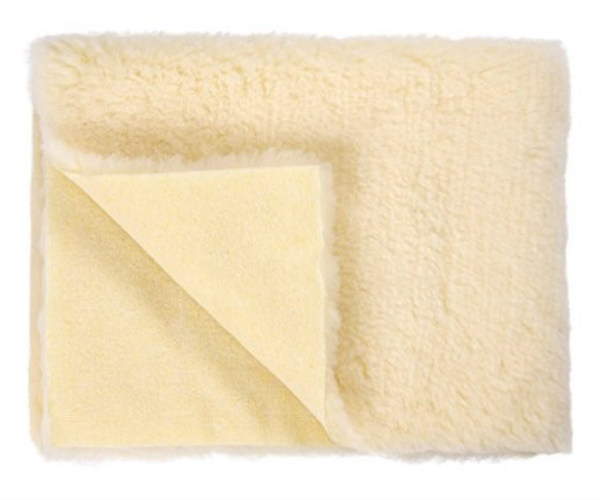
This is a sample of bedding that is human grade and is used for patients with bedsores. It is commonly called “synthetic lamb’s wool bedding.” The top is soft and warm, while the bottom allows for moisture to be wicked away. This material can easily be washed, disinfected, and reused. This material is commonly used in Chew Man dog toys. You can cut holes into each corner to easily place and secure a tack bar. You can purchase this product online or from any medical supply store.

This is a sample of another human-grade moisture-wicking bed pad. These are commonly used on hospital beds for keeping small areas clean and dry. These, too, can be purchased online or from any medical supply store. Make sure all bedding is secured for the safety of your puppies.
Hopefully, these few tips will help you set up a safe and warm whelping box for your next litter of puppies!
Thank you to Drs. Foster and Smith, Lambert Veterinary Supply, Revival Animal Health, the Beachy family, Betty Mills, and all those folks on Pinterest who have so graciously posted some wonderful pictures that I have shared.


